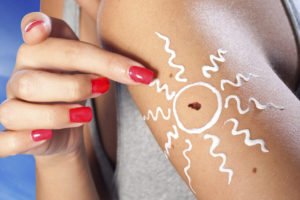Skin Cancer Surgery
Basal Cell Carcinoma and Squamous Cell Carcinoma Treatment

Mohs Micrographic Surgery
Mohs surgery offers the most effective and advanced treatment for skin cancer with the highest potential rate of cure – up to 99% for primary basal cell carcinoma and squamous cell carcinoma. The advantages of Mohs are assurance of complete cancer removal and minimal loss of healthy tissue surrounding the cancer. This results in smaller wounds and improved cosmetic and functional outcomes.
Curettage and Electrodessication
This procedure is reserved for small lesions. The cancerous growth is scraped off with a curette, which is an instrument with a sharp, ring-shaped tip. The tumor site is then burned with an electrocautery needle. The cure rate for this procedure is approximately 95 percent. This is typically used to treat small, early, non-melanoma skin cancers of the trunk and extremities. This procedure may need to be repeated a few times to assure all cancer cells are removed.
Excisional Surgery
Your provider will remove the entire growth along with a surrounding border of normal skin with a scalpel. The skin around the excisional site is closed with sutures and the tissue is sent to a laboratory to verify all cancerous cells have been removed. If the pathology report shows the skin cancer remains, an additional excision may be required.
Cryosurgery
Cryosurgery is when the cancer tissue is treated by spraying liquid nitrogen onto the growth. Liquid nitrogen may be repeated during the same session to ensure total destruction of malignant cells. The spot may blister and crust over within a few weeks. It will eventually fall off. Temporary redness and swelling may occur at the site. Cryosurgery is effective mostly in superficial basal cell carcinomas.
Topical Medications
These medications are used to treat specific basal cell carcinomas as well as squamous cell carcinomas. Imiquimod is FDA-approved for superficial cancers. The cream is applied onto the growth five times a week for up to six weeks or longer. 5-Fluorouracil (5-FU) is a chemotherapy drug is used to treat superficial cancers. The cream is also applied onto the growth twice a day for three to six weeks.
Melanoma Treatment
The best treatment for melanoma depends on the size and stage of the cancer, as well as your overall health. Treatment for early stage melanoma is to remove the cancer. The standard method of doing this is by excisional surgery (cutting it out). Your dermatologist will remove the cancer as well as a border of normal skin and a layer of tissue beneath the skin.
If the melanoma has spread beyond the skin, treatment options may include:
The first signs can appear in one or more atypical moles. It is extremely important to get to know your skin and recognize any changes in the moles on your body. Individuals should check their moles on a monthly basis for any changes. Dr. Christopher Weyer recommends taking a picture of your moles to keep track of any changes overtime. If a particular mole displays one or more of these signs or changes, you should consult a dermatologist for evaluation.
- Surgery to sample the lymph nodes to see if the melanoma has spread. This is only done if the melanoma reaches a certain depth in the skin.
- Chemotherapy is a drug that wipes out cancer cells. This can be given to you intravenously, in pill form or both.
- Radiation therapy is a treatment that uses high-powered energy beams to kill cancer cells. It is sometimes used to help relieve symptoms of melanoma that has spread to other parts of the body.
The first signs can appear in one or more atypical moles. It is extremely important to get to know your skin and recognize any changes in the moles on your body. Individuals should check their moles on a monthly basis for any changes. Dr. Christopher Weyer recommends taking a picture of your moles to keep track of any changes over time. If a particular mole displays one or more of these signs or changes, you should consult a dermatologist for evaluation.
Use mirrors to check your face, neck, ears and scalp. Examine your chest and trunk, tops and undersides of your arms and hands, fronts and backs of legs and feet.
To learn more about skin cancer surgery, or to schedule your consultation with Board-Certified Dermatologist Dr. Weyer, please fill out the form on this page. You can call our Tucson location at 520-207-3100 or our Sierra Vista location at 520-458-1787. We look forward to seeing you soon!

